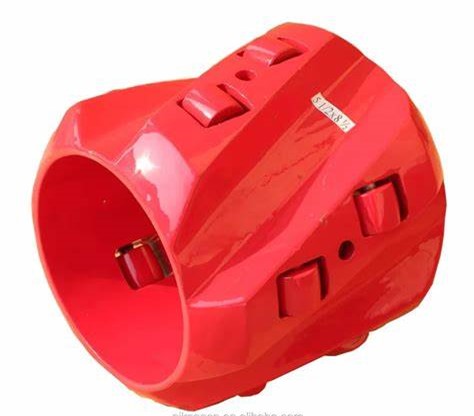Introduction
In petroleum drilling operations, centralizers are essential downhole tools designed to ensure that casing remains correctly positioned within the borehole. They prevent contact with the wellbore, thereby reducing wear and the risk of sticking. Their unique design and operating principles are crucial for enhancing drilling efficiency and safeguarding casing integrity.
Structure of Centralizers
Centralizers are typically made from high-strength metal materials, ensuring durability and robustness. Their main components include:
- Centralizer Body: This is the primary component, providing sufficient strength and rigidity to withstand the challenging downhole environment.
- Spring Blades: These are evenly distributed around the centralizer body and serve to support and position the casing, adapting to variations in casing diameter through elastic deformation.
- Connecting Components: These components attach the centralizer to the casing, ensuring it descends into the wellbore together with the casing during drilling.
Working Principle of Centralizers
The operation of centralizers is based on mechanical principles and the characteristics of downhole environments. As casing is lowered into the well, irregularities in the borehole and complexities of the formation can cause it to contact the wellbore, leading to wear and potential sticking. To mitigate these issues, centralizers are installed on the casing.
Centralizers maintain the casing in a centered position within the borehole by utilizing the elastic deformation of the spring blades to accommodate changes in casing diameter. As the casing is lowered, the centralizer moves along with it. When the casing encounters narrower sections of the borehole or changes in formation, the spring blades compress and generate a reactive support force, pushing the casing toward the center of the wellbore to maintain stability.
Additionally, centralizers provide a guiding function, helping to direct the casing along the intended trajectory and preventing deviations from the designed wellbore path, which enhances drilling accuracy and efficiency.
Applications and Advantages of Centralizers
Centralizers are widely used in petroleum drilling, especially in complex formations and deep well operations. Their primary advantages include:
- Reduced Wear and Sticking Risks: By keeping the casing centered in the borehole, they minimize contact with the wellbore.
- Enhanced Drilling Efficiency: They reduce downtime caused by sticking incidents.
- Protection of Casing Integrity: They prolong the lifespan of the casing, ensuring a robust foundation for subsequent oil and gas extraction.
Centralizers feature a simple structure and are easy to install, accommodating various casing diameters and types. Their excellent elasticity and abrasion resistance enable them to perform effectively in complex downhole conditions.
Conclusion
As drilling technology continues to advance, the performance requirements for centralizers are also increasing. Future developments will likely focus on higher performance, greater reliability, and smart technologies. Furthermore, the introduction of new materials and manufacturing processes will create new opportunities and challenges for their design and application.
In summary, centralizers play a critical role in maintaining casing stability and enhancing drilling efficiency, providing significant support for the safety, efficiency, and environmental sustainability of petroleum drilling operations.
Post time: Sep-27-2024





